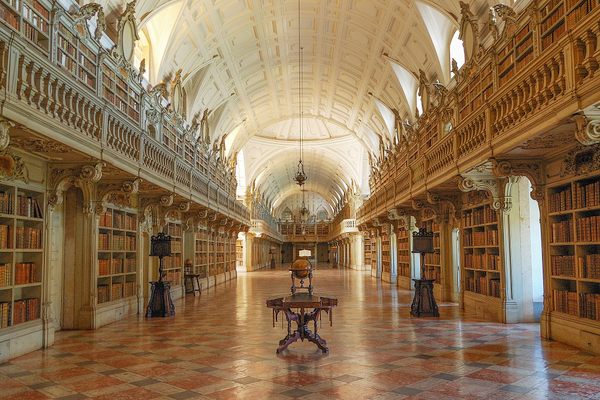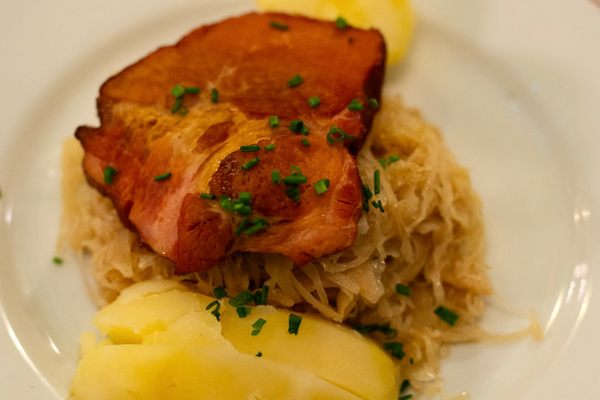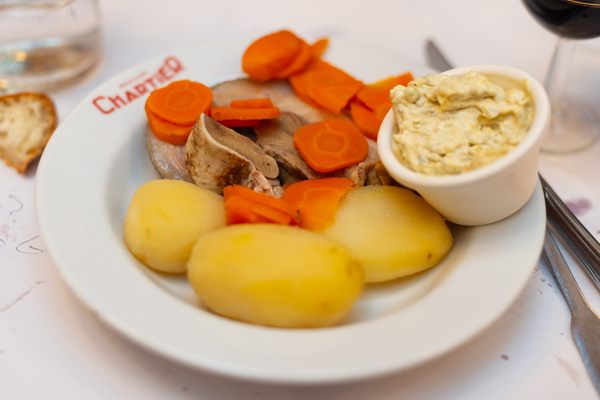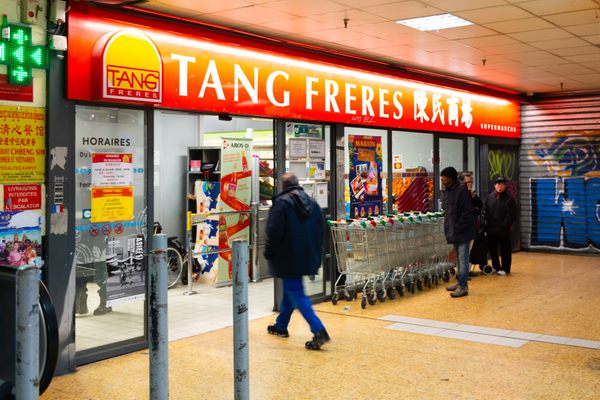

Gastro Obscura’s 13 Essential Places to Visit While in Paris
From Algerian sweets to Tunisian snacks to a mind-altering ham sandwich, go beyond the tropes and the tourist traps on this itinerary.
Yes, Paris is the City of Light, and a city that actually, really delivers on all the cliches. But it’s also a big, bustling, intimidating metropolis with all the good and bad, overhyped and the forgotten, the classic and the cutting edge that comes with this. And as with any big, bustling, intimidating metropolis, it helps to have a guide.
Rather than put together yet another Paris best list, we’ve assembled some of the restaurants, stalls, bakeries, markets, producers, and shops that emphasize the diversity of this metropolis. We’ve featured venues that show Paris’s French side, of course, but also those that show the city’s immigrant influences, the places where the line between French and foreign has been blurred. Consider this a taste of the new and the timeless, as well as a compelling case for why this remains one of the world’s most exciting places to eat.

Chez Bob de Tunis
This decades-old hole-in-the-wall is one of only a handful of places in Paris to get Tunisian-style sandwiches, namely the sandwich tunisien and the fricassé. The former takes the form of a puffy, light baguette bursting with tuna, potato, hard-boiled egg, olives, and capers, while the latter is slimmed down to snack size with a fried brioche roll as vehicle.

E. Dehillerin
Shop where Julia Child did at this 200-year-old former copperware producer and cooking supplies store located near the legendary, long-gone Les Halles Market. It’s a charmingly dusty, winding, creaky hardware store-like maze of butter curlers, duck presses, escargot tongs, piping molds, and knives of every type.

Stohrer
Dating back to 1730, and still boasting the same address nearly 300 years later, Stohrer is the oldest pastry shop in Paris. It’s also where baba au rhum, a quintessential Paris sweet, was invented, the result of a collaboration between an exiled Polish king and his pastry chef, one Nicolas Stohrer.

La Bague de Kenza
Algerians constitute a large part of Paris’s immigrant population, but their cuisine is underrepresented in the city. To sample Algerian sweets—sugary bites that blend syrupy honey, rich nuts, chewy dates, crunchy semolina, and fragrant orange and rose water—head to this jewel box-like bakery in the 11th arrondissement.

Marché Dejean
Lying practically in the shadow of Montmartre is the Château Rouge neighborhood, perhaps better known as Paris’s Little Africa. Tiny Rue Dejean functions as this community’s central market, and is where halal butchers, fishmongers, streetside vegetable stalls, and shops specializing in dried goods from Africa come together.

Le Timgad
Open since 1971, Le Timgad was one of the first places in Paris to serve Moroccan food to a French clientele. The restaurant is like a time capsule from this era, with bowtied waiters and decadent furnishings that haven’t changed in decades. It’s also a go-to for couscous princier (also known as couscous royale), a French invention of couscous served with a variety of meats.

Bouillon Chartier
Forget bistrots; the real Paris restaurant experience is the bouillon. Dating back to the late 19th century, these “soup halls” were places where Parisians could enjoy inexpensive French food in pleasant surroundings. Dating back to 1896, Bouillon Chartier is one of the few surviving examples of the genre. And although it claims to have served more than 50 million meals, it doesn’t appear to have changed much since opening day.

La Maison du Brie de Meaux
The greater Paris region is home to one of France’s most famous cheeses. Brie de Meaux is produced in and around the eponymous town, located less than an hour east of Paris. Indeed, Meaux is so proud of its local product that in 2016 it created a museum dedicated to it. La Maison du Brie de Meaux offers displays on the history of “the cheese of kings” and how it’s made, as well as tastings.

Tang Frères
In 1976, two ethnically Chinese brothers from Laos started importing Asian ingredients to France. Within five years, they had created the country’s first large Asian market. Ten branches and nearly five decades later, Tang Frères’ flagship branch is still in operation in Paris’s 13th arrondissement, thought to be one of the largest Asian communities in Europe.

Au Pied de Cochon
Soupe à l’oignon was once served in stalls and restaurants near the now-defunct Les Halles Market as a cheap, fortifying, one-dish meal to accommodate market workers. Au Pied de Cochon, opened by a former butcher in 1947, is one of the original restaurants to have served the soup and is still in business today, and still serves working-class dishes made with off-cuts such as marrow bones, kidneys, pork head, or the eponymous pork trotters.

Bouillon Julien
With its stained glass, painted panels, mirrored ceiling, and mahogany bar, Bouillon Julien practically drips with Art Nouveau loucheness, yet its menu boasts plenty of items that start below 5 euros. More than a century since it first opened its doors, this iconic bouillon is one of only a handful of such venues that have retained this legacy of good-value, tasty dining in opulent surroundings.

Chez Aline
In a city known for some of the world’s most sophisticated dishes, one defiantly simple concoction stands out. Jambon-beurre takes the form of a baguette slathered with butter and topped with slices of ham—that’s it. It’s utterly beloved by Parisians and Chez Aline, a bare-bones takeaway counter, is thought to serve one of the best versions of the sandwich in the city.

La Guez Mère
It might be Paris’s only true street food. Merguez frites takes the form of a light, puffy baguette stuffed with spicy Algerian sausage (the merguez) and French fries (the frites). The dish is a late-night snack served from fast food-leaning places in the city, but it doesn’t get more street than at La Guez Mère, a converted truck in Paris’s immigrant neighborhood of Belleville that specializes in the sandwich.
Gastro Obscura covers the world’s most wondrous food and drink.
Sign up for our email, delivered twice a week.


















Follow us on Twitter to get the latest on the world's hidden wonders.
Like us on Facebook to get the latest on the world's hidden wonders.
Follow us on Twitter Like us on Facebook